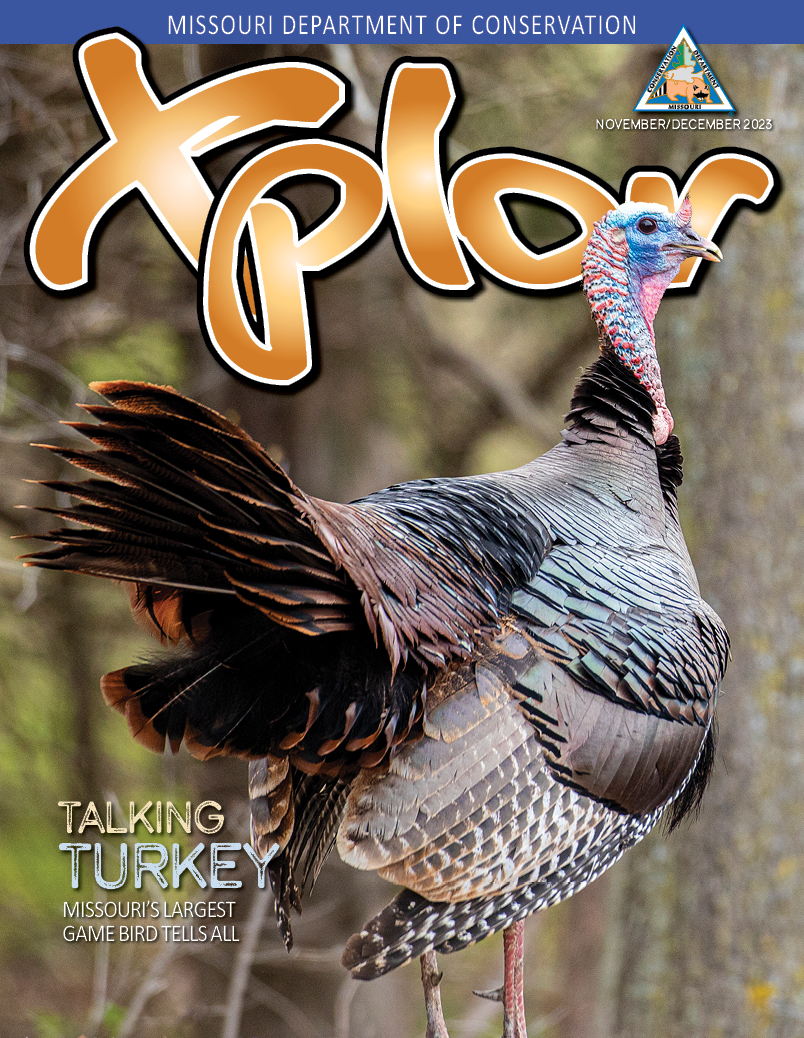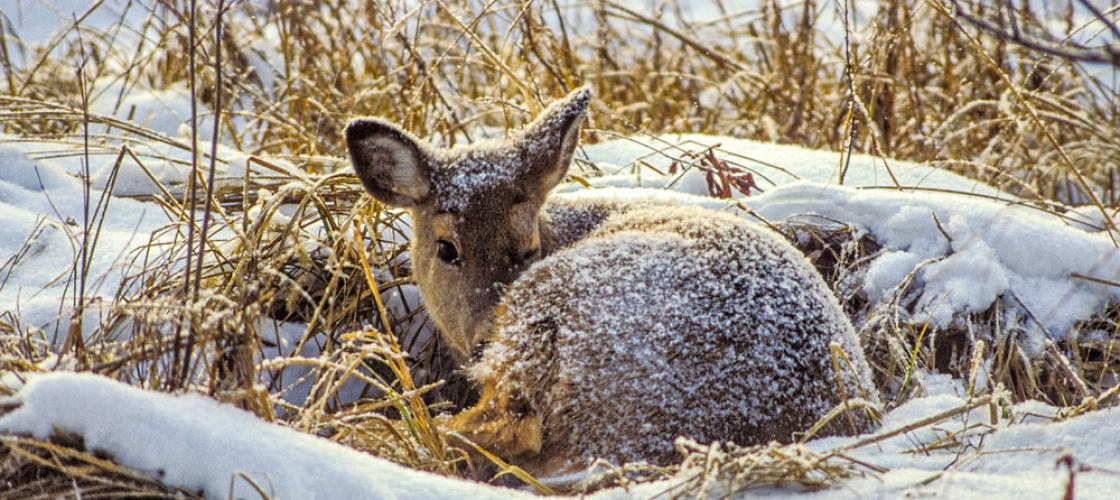
Brrrrr! It’s freezing outside. When people get chilly, we can pull on a puffy or go indoors to warm up. Wild animals aren’t so lucky. But don’t feel blue. Critters have tons of ways to stay alive when temperatures dive.
Get Fluffy
If you watch a bird feeder regularly, you’ll soon notice something strange. On the coldest days, birds who visit look extra floofy. That’s because they’re fluffing up their feathers to trap air against their skin. Their bodies heat this layer of trapped air, and it protects them from surrounding chills. People borrowed the same trick. Our warmest coats and blankets are stuffed with — you guessed it — feathers.
Get Fat
Nom, nom, nom. This black bear is … nom, nom … stuffing its furry face with … gulp … blackberries. Before winter, bears go on a feeding frenzy, eating insects, acorns, and anything else they can get their paws on. For a bear hoping to stay warm, being fat is where it’s at. Not only does a thick layer of blubber insulate a bear’s insides, but fat also provides energy the bear’s body can turn into heat.
Get Furry
What do you notice about the snow on this deer’s back? It isn’t melting! White-tailed deer, like many of Missouri’s mammals, grow a thick coat of fur in the fall to help them cope with the cold. A deer’s winter coat even has hollow, air-filled hairs, which trap extra heat. Their coats hold in heat so well, very little escapes, and fluffy flakes pile up on their backs like snow on the roof of a well-insulated house.
Fuel Up
How does a chickadee, which weighs less than a handful of paper clips, not turn into a birdsicle on a frigid winter night? During the day, the tiny fluff balls stuff their beaks with seeds. By dusk, most have packed on an extra 10 percent of body weight. As darkness falls, chickadees begin turning the extra fat into energy so they can shiver through the night. By daybreak, they’ve shivered away the chonk and dropped back to their normal weight. This would be like a person going to bed weighing 100 pounds and waking up weighing only 90.
Huddle Up
When you’re cold, do you ever snuggle with your family or friends? In the winter, northern bobwhites gather in groups called coveys. At night, covey members crowd together in a circle with their tails touching and their beaks pointing out. This does two things. First, each quail is kept warm by friends on either side of it. And second, the yummy little birds keep a pair of peepers pointed in every direction, so predators rarely approach undetected.
Hole Up
When weather turns really nasty, squirrels hunker down in a leafy nest or cozy hole until conditions improve. The nut-munchers are like mini heaters, warming the “room” around them. By placing thermometers inside the winter homes of squirrels, biologists have discovered that the inside of a den can be over 50 degrees warmer than the air outside!
Take Off
Many birds, like this common yellowthroat, say “I’m outta here!” before winter arrives. Instead of toughing it out, they fly south where the weather is warmer and where there’s more food to eat. For birds who spend summer farther north, like mallards and juncos, Missouri is the warm wonderland where they spend winter.
Take a Nap
Every October, Missouri’s bats flutter into a cave or crevice, hang upside down, and switch their bodies to “standby.” Their breathing nearly stops. Their hearts, which can beat over 1,000 times a minute while flying, slow to about 20 beats a minute. And their body temperatures drop from about 100 degrees to about 50. This slowed-down, sleeplike state is called hibernation. It helps bats save energy, so they can go all winter without eating.
Take a Stand
This mallard, like many birds, has two main blood vessels in each leg that run side by side. One carries blood from its body down to warm its foot. The other carries blood from its foot back up to its body. As cooler blood from the foot moves upward, it’s heated by warmer blood moving downward. By the time the blood returns to the body, it’s warm again.
Just Give Up
A wood frog spends winter chilling out — literally. When icy weather hits, the frog quits breathing, its heart stops, and its body freezes nearly solid. Most animals would die if this happened. But the frog’s liver makes a chemical that keeps the frog’s cells from freezing. When spring arrives, the ice-cold croaker thaws out and hops away as if nothing happened.
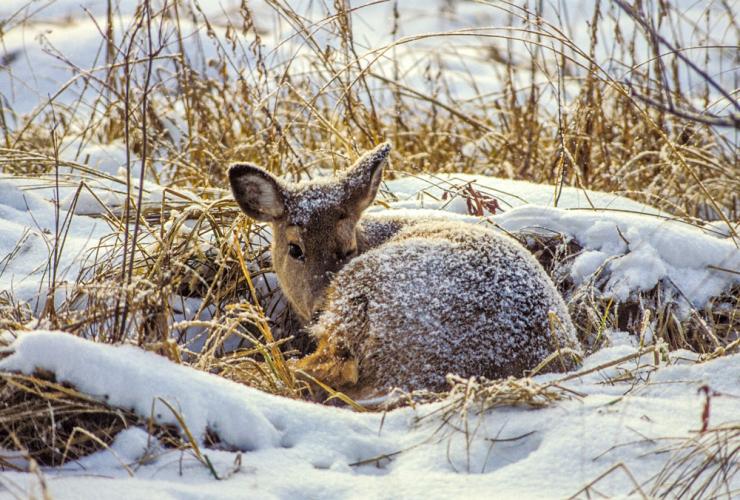
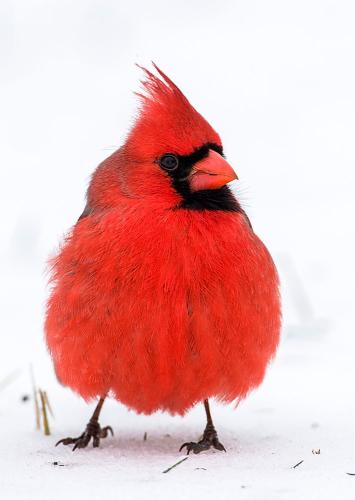
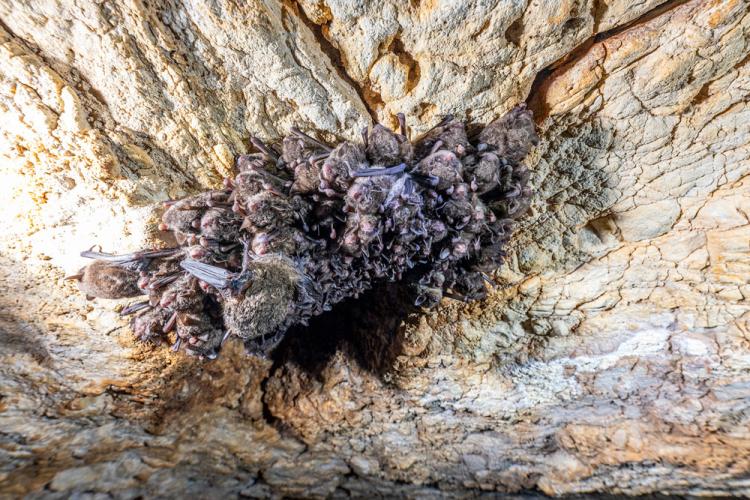
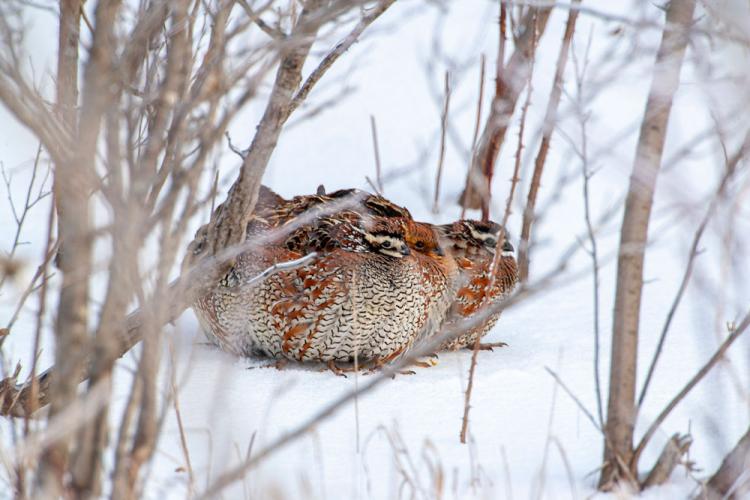
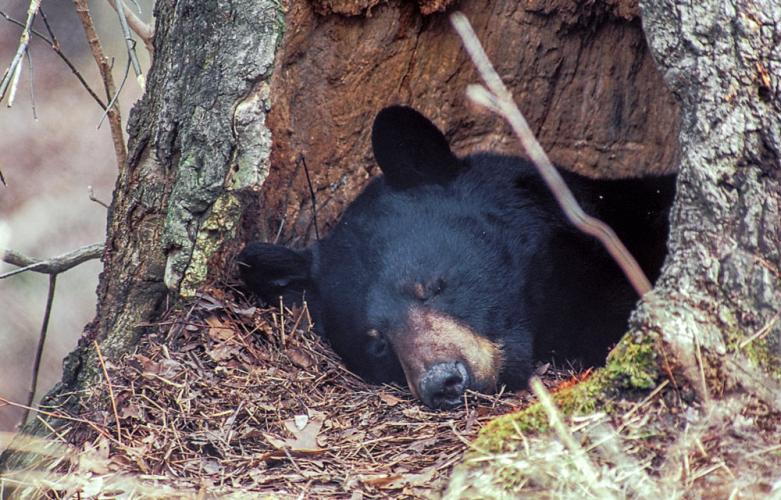
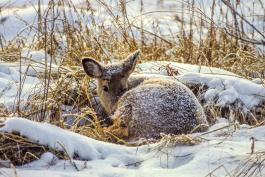
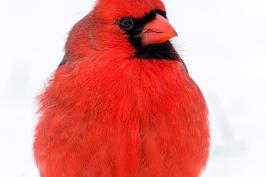
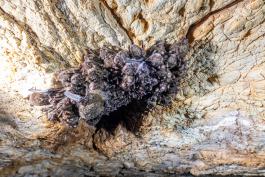
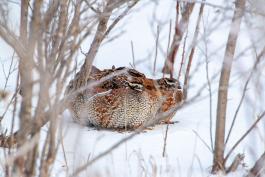
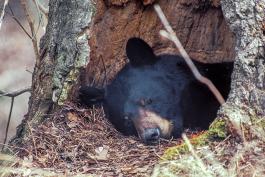
Also In This Issue
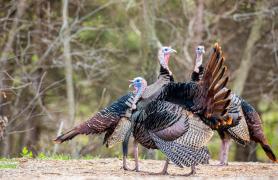
Drama and danger abound for Missouri’s largest game bird.
And More...
This Issue's Staff
Photographer – Noppadol Paothong
Photographer – David Stonner
Designer – Marci Porter
Designer – Les Fortenberry
Art Director – Cliff White
Editor – Matt Seek
Subscriptions – Marcia Hale
Magazine Manager – Stephanie Thurber






















